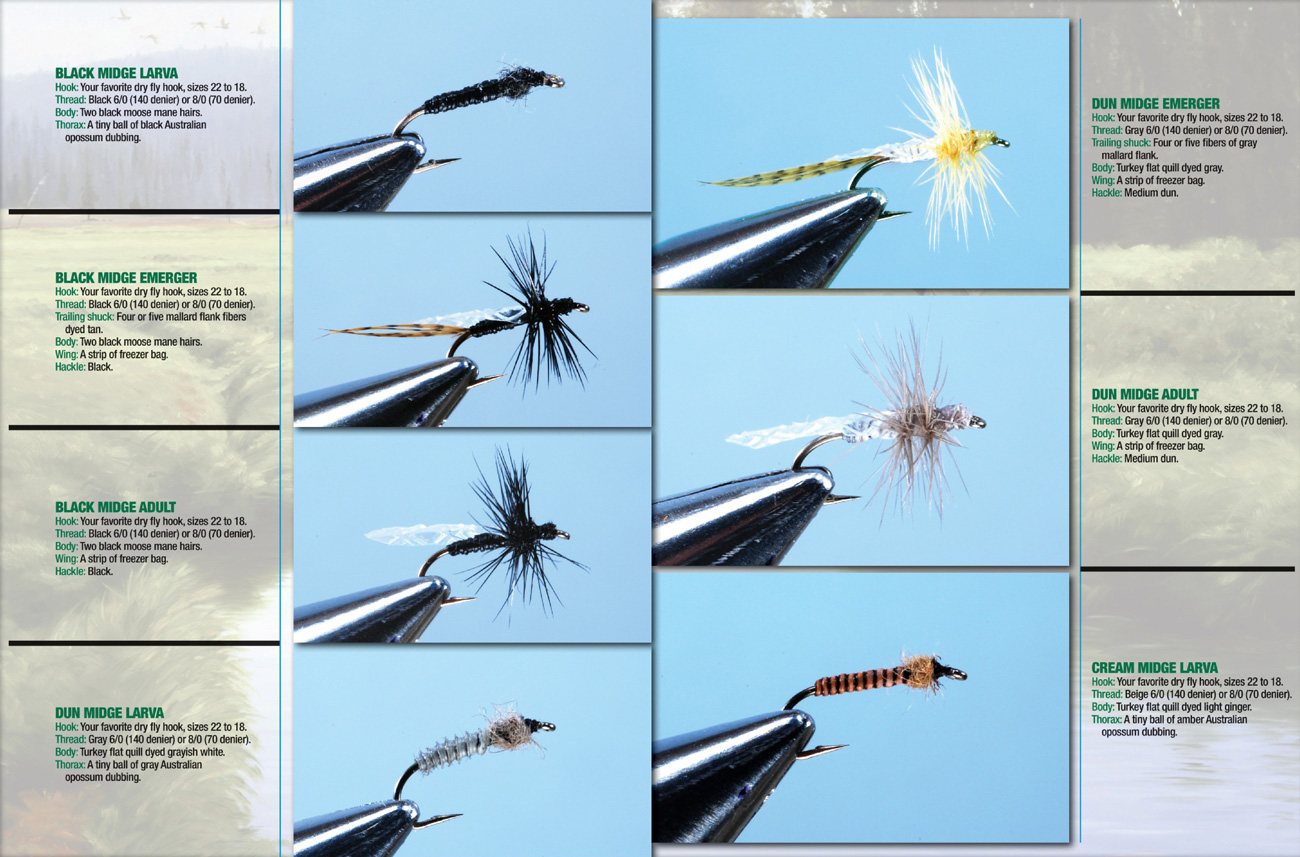
Everyone who ties trout flies knows A. K. Best. In this special article, the legendary tier picks his favorite patterns for fishing his home state of Colorado.
[bu A.K. Best]I’ve lived in Colorado since 1980 and have fly fished many of the streams in our beautiful state. It seems that each year more folks come here to do the same thing. When I worked in a fl y shop during the early years, the most common question was, “What’s hatching?” I no longer work in a flyshop, but I still get the same question through emails and phone calls. Whether you are planning your first visitor have already fished in Colorado and were confused about the hatches,I hope what follows will answer this question for you. The flies I have selected cover most of the situations you are likely to encounter on tailwaters, mountain lakes, and freestone mountain streams.

Midges are on the water year-round. River trout are used to seeing them and will happily sipin a Black Midge most of the season; have cream midge imitations for fishing lakes and ponds. Olive midges begin hatching sometime after the middle of the year and can be masking hatches of black midges and blue-winged olives. On tailwaters, look for dun midges a few miles downstream.
Global climate change has come toColorado. Blue winged olives used to begin hatching around late February and last into the first two weeks of November, but for the past two or more years, they have begun emerging in late January and last until December. The early BWO hatches are darker in color than the flies in the accompanying photographs, and as the sun gets higher in the sky in late spring and during the summer months, their color begins lightening. As autumn sets in, their color darkens again. If you are a “colorist”like me, this can bean important bit of information.
The early blue-winged olive hatches (January through March) are also a size larger, so you will need a few size 16 flies. In late fall,you’ll want size 24 and even size 26. Use the same pattern designs listed in the recipes,but change material proportions. You will find blue-winged olives hatching on all tailwater and freestone streams throughout Colorado.

Red quills hatch…





